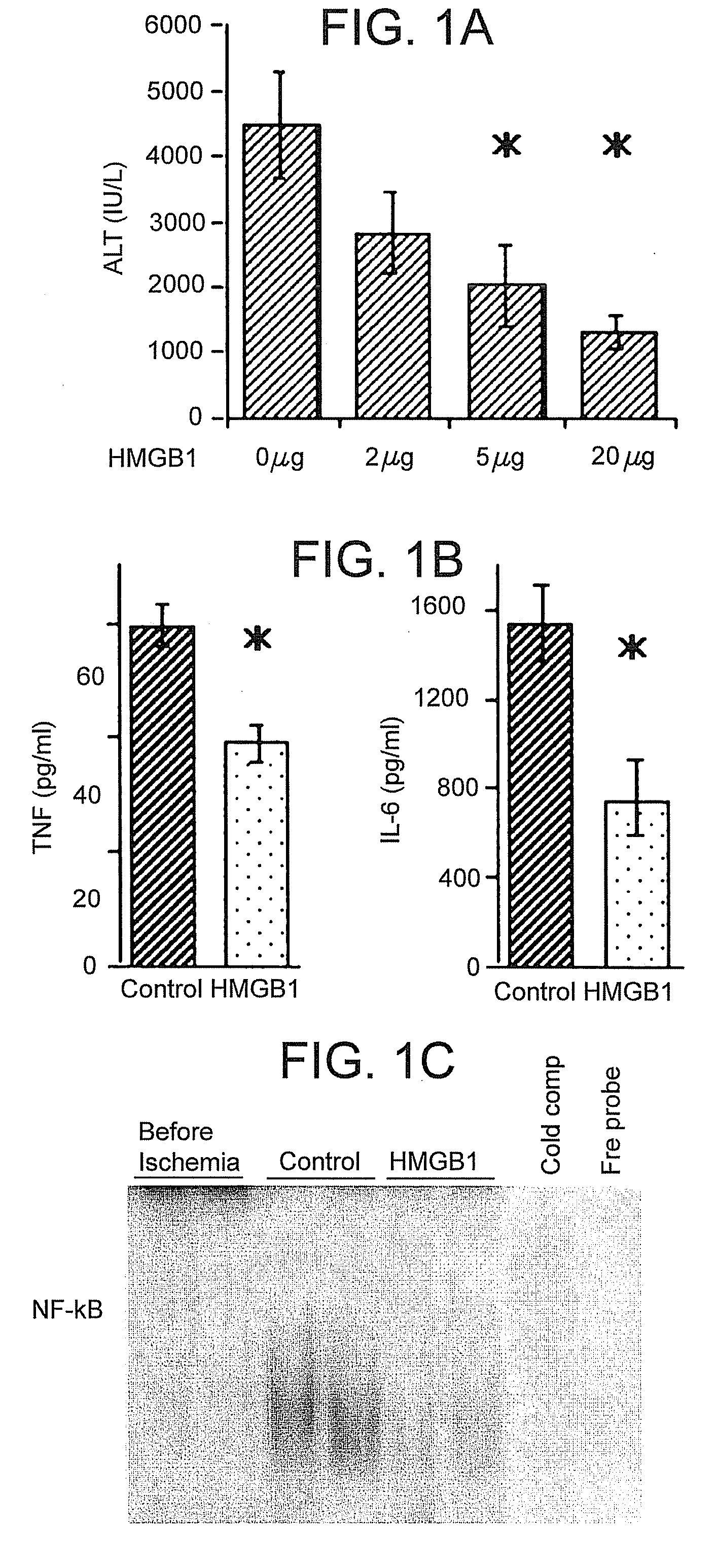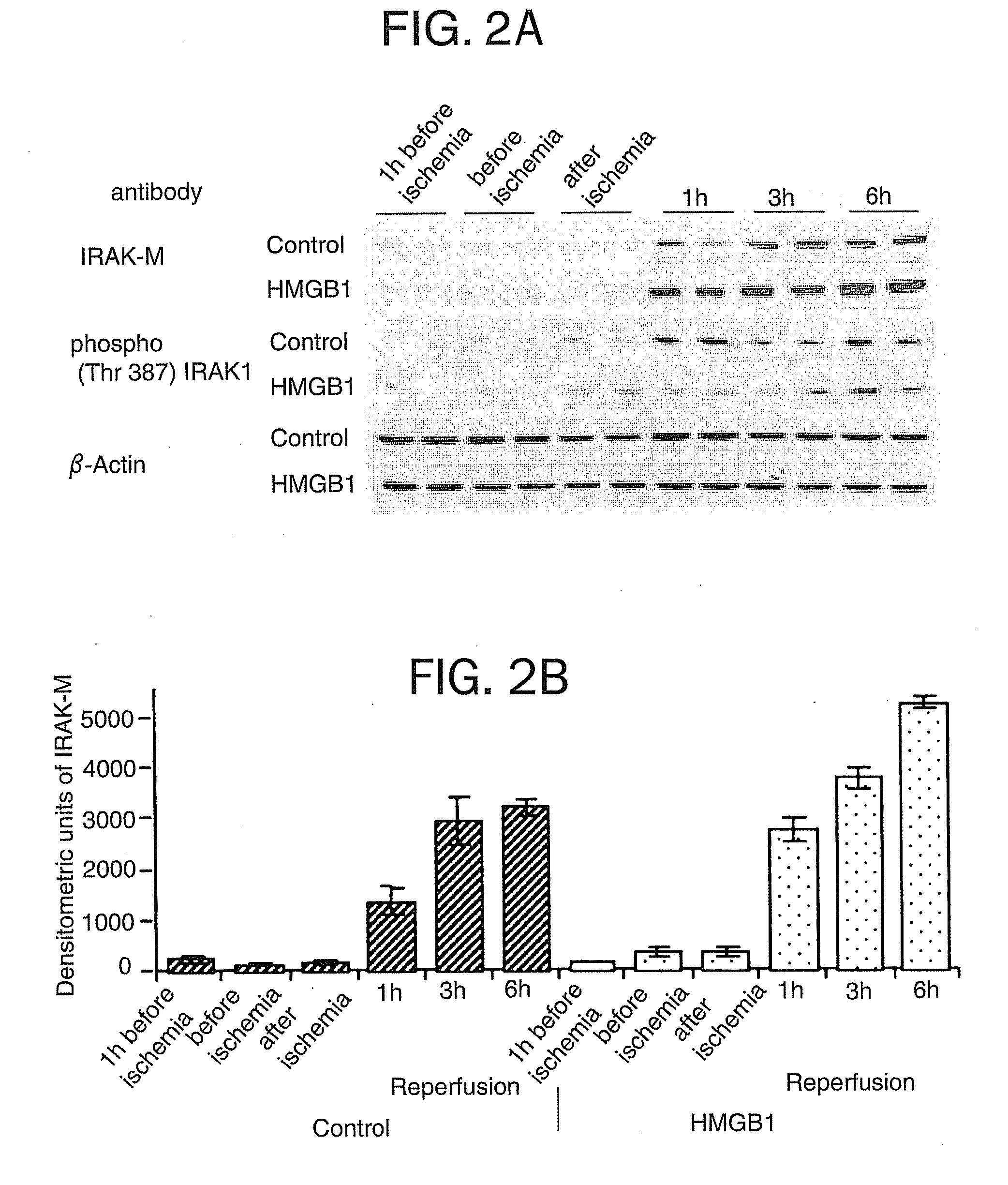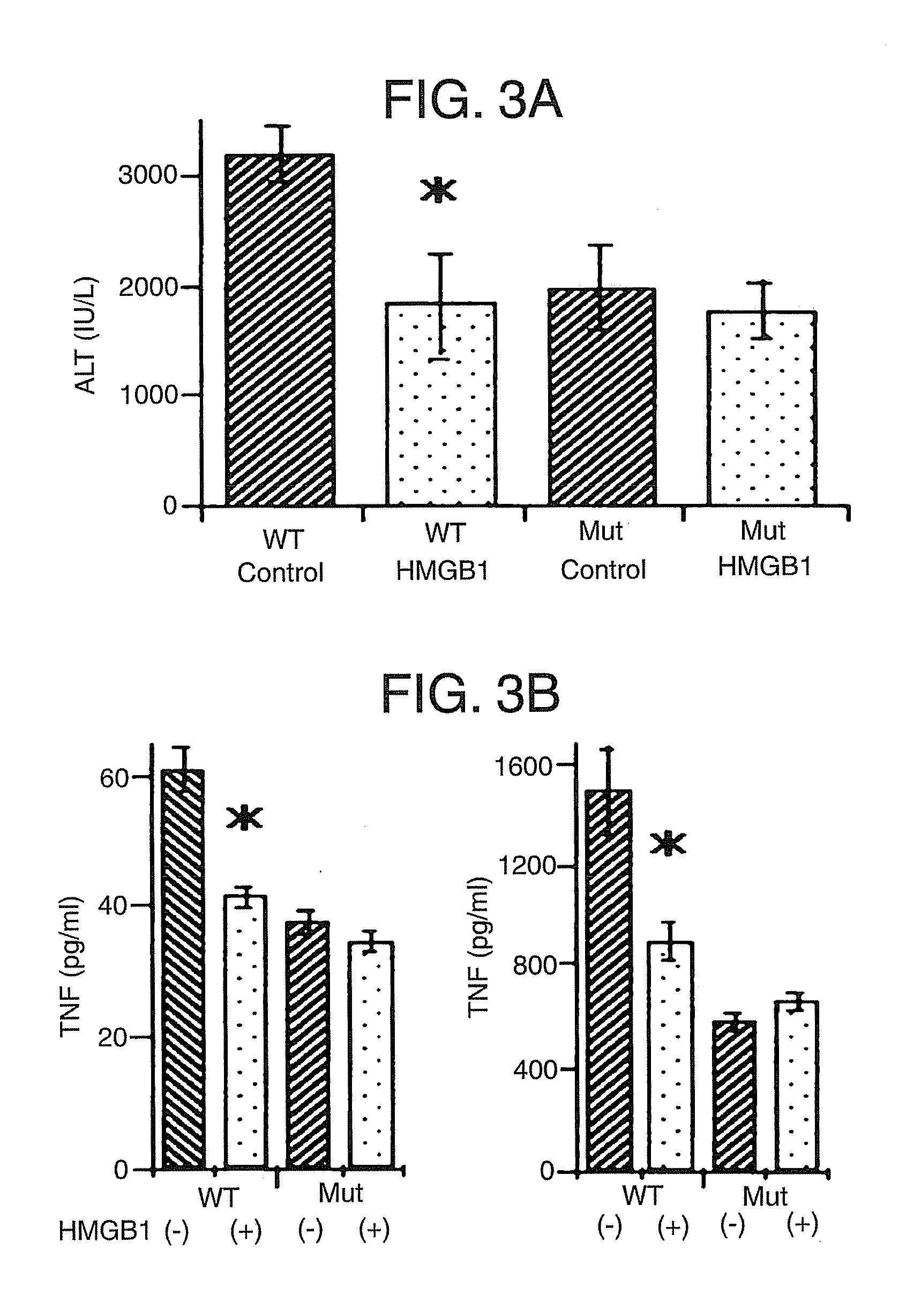Use of HMGB1 for protection against ischemia reperfusion injury
a technology of ischemia and hmgb1, which is applied in the direction of antibody medical ingredients, peptide/protein ingredients, immunological disorders, etc., and can solve the problems of inflammation or injury
- Summary
- Abstract
- Description
- Claims
- Application Information
AI Technical Summary
Benefits of technology
Problems solved by technology
Method used
Image
Examples
example 1
[0069] This example demonstrates that HMGB1 treatment can protect against hepatocellular injury caused by I / R.
[0070] Male wild-type (C57BL / 6; C3H / HeOuj) and TLR4-defective (C3H / HeJ) mice (8-12 weeks old) were purchased from the Jackson Laboratory (Bar Harbor, Me.). All animals were maintained in a laminar-flow, specific pathogen-free atmosphere at the University of Pittsburgh. Animal protocols were approved by the Animal Care and Use committee of the University of Pittsburgh and the experiments were performed in adherence to the National Institutes of Health Guidelines for the use of Laboratory Animals.
[0071] Mice received either recombinant HMGB1 or vehicle PBS intravenously at various concentrations one hour prior to ischemia. Recombinant HMGB1 was prepared as described in Yang, et al., Proc Natl Acad Sci USA 101:296-301 (2004). The HMGB1 used for these studies contained undetectable amounts of LPS as measured by the chromogenic Limulus amoebocyte lysate assay (Associates of Cap...
example 2
[0078] This example demonstrates that pretreatment with HMGB1 can protect against I / R injury relating to TLR4 signaling.
[0079] TLR4-mutant (C3H / HeJ) mice and wild-type control (C3H / HeOuj) mice were subjected to liver I / R with or without HMGB1 pretreatment as described in Example 1. Serum ALT levels, serum TNF and IL-6 levels, and hepatic IRAK-M expression were measured.
[0080] Based on serum ALT levels, control TLR4-mutant mice were protected from hepatic I / R injury compared to control wild-type mice. (FIG. 3A). The protective effect of HMGB1 pretreatment as seen in wild-type mice was not increased in TLR-4 mutant mice; TLR4-mutant mice were protected at the same level regardless of whether they received HMGB1 pretreatment. Although the liver damage in TLR-4 mutant mice is approximately 50% less than in control wild-type mice, it is still much greater than sham animals.
[0081] TLR4 wild-type mice treated with HMGB1 exhibited decreased circulating TNF and IL-6 levels compared to con...
example 3
[0083] This example demonstrates that pretreatment with lipopolysaccharides (LPS) does not protect against I / R injury to liver tissue.
[0084] Preconditioning during I / R can be triggered by diverse stimuli, including endotoxemia. To exclude a role for LPS in the protective effects seen with HMGB1 pretreatment, mice were treated with varying doses of LPS and subjected to liver I / R. LPS from E. coli 0111:B4 was obtained from Sigma (St. Louis, Mo.). Unlike mice pretreated with HMGB1, the mice pretreated with either 5 ng or 5 μg of LPS did not exhibit a reduction in I / R-induced damage compared to control animals (FIG. 5). These results provide evidence against a contribution of contaminating LPS in the protection seen with HMGB1 preconditioning.
PUM
| Property | Measurement | Unit |
|---|---|---|
| Fraction | aaaaa | aaaaa |
| Time | aaaaa | aaaaa |
| Mass | aaaaa | aaaaa |
Abstract
Description
Claims
Application Information
 Login to View More
Login to View More - R&D
- Intellectual Property
- Life Sciences
- Materials
- Tech Scout
- Unparalleled Data Quality
- Higher Quality Content
- 60% Fewer Hallucinations
Browse by: Latest US Patents, China's latest patents, Technical Efficacy Thesaurus, Application Domain, Technology Topic, Popular Technical Reports.
© 2025 PatSnap. All rights reserved.Legal|Privacy policy|Modern Slavery Act Transparency Statement|Sitemap|About US| Contact US: help@patsnap.com



